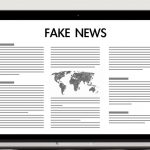
SCIENCE SHOCK: Almost all medical studies are “bogus” … reproducibility approaches ZERO
Monday, May 08, 2017 by Mike Adams
http://www.suppressed.news/2017-05-08-science-shock-almost-all-medical-studies-are-bogus-reproducibility-approaches-zero.html

If you’ve ever wanted to read large collections of fake news, look no further than medical science journals such as The Lancet or the British Medical Journal. Almost everything they publish is “bogus,” explains science writer Richard Harris, who writes for NPR, and the result is billions of dollars in fraud, waste and unnecessary expenditures on Big Pharma drugs that simple don’t work.
His new book is called Rigor Mortis: How Sloppy Science Creates Worthless Cures, Crushes Hope, and Wastes Billions, and it reveals the truth about science fraud that I’ve been documenting for years on Natural News and Scientific.news. What truth is that? Most “science” studies don’t hold up under scrutiny, and most of them can’t be reproduced when someone else attempts to perform the same experiment.
The entire apparatus of Big Pharma and FDA approved drugs, in other words, is largely fraudulent. Most drugs simply don’t work on most people, which is exactly why people who take lots of prescription medications almost always see a decline in their health (they get sicker, not healthier).
The bogus nature of bad science is present across every realm of science, by the way: Pharmaceuticals, climate change, psychology, physics, chemistry and more. Climate change is probably the worst of all these, where scientists decide in advance what outcomes they want to see, then work diligently to shape the computer modeling or data sets to achieve the outcome they want. In fact, the entire industry of “climate change science” is rooted in total junk science fraud, buoyed by fabricated science and aggressive demands of social conformity (plus coordinated attempts to smear and discredit any scientists who don’t kowtow to the science totalitarians).
What’s especially notable in all this is that medical science studies are almost always given instant credibility of “real news” even when they are demonstrably fake. Thus, Google’s war on “fake news” will censor information that questions the legitimacy of the faked science studies because Google automatically assumes all medical journals are 100% real and correct at all times. The far more accurate answer is that they are probably only accurate about 1% of the time, which means they’re 99% fake news that Google scores as 100% real. (See more news about Google’s disinformation schemes at Disinfo.news.)
The New York Post has published an outstanding article summarizing the sad state of science today. Read the original article at the New York Post website:
Medical studies are almost always bogus
By Susannah Cahalan
How many times have you encountered a study — on, say, weight loss — that trumpeted one fad, only to see another study discrediting it a week later?
That’s because many medical studies are junk. It’s an open secret in the research community, and it even has a name: “the reproducibility crisis.”
For any study to have legitimacy, it must be replicated, yet only half of medical studies celebrated in newspapers hold water under serious follow-up scrutiny — and about two-thirds of the “sexiest” cutting-edge reports, including the discovery of new genes linked to obesity or mental illness, are later “disconfirmed.”
Though erring is a key part of the scientific process, this level of failure slows scientific progress, wastes time and resources and costs taxpayers excesses of $28 billion a year, writes NPR science correspondent Richard Harris in his book “Rigor Mortis: How Sloppy Science Creates Worthless Cures, Crushes Hope, and Wastes Billions” (Basic Books).
“When you read something, take it with a grain of salt,” Harris tells The Post. “Even the best science can be misleading, and often what you’re reading is not the best science.”
Take one particularly enraging example: For many years research on breast cancer was conducted on misidentified melanoma cells, which means that thousands of papers published in credible scientific journals were actually studying the wrong cancer. “It’s impossible to know how much this sloppy use of the wrong cells has set back research into breast cancer,” writes Harris.
Another study claimed to have invented a blood test that could detect ovarian cancer — which would mean much earlier diagnosis. The research was hailed as a major breakthrough on morning shows and in newspapers. Further scrutiny, though, revealed the only reason the blood test “worked” was because the researchers tested the two batches on two separate days — all the women with ovarian cancer on one day, and without the disease the next. Instead of measuring the differences in the cancer, the blood test had, in fact, measured the day-to-day differences in the machine.
So why are so many tests bogus? Harris has some thoughts.
For one, science is hard. Everything from unconscious bias — the way researchers see their data through the rosy lens of their own theses — to the types of beaker they use or the bedding that they keep mice in can cloud results and derail reproducibility.
Then there is the funding issue. During the heyday of the late ’90s and early aughts, research funding increased until Congress decided to hold funding flat for the next decade, creating an atmosphere of intense, some would say unhealthy, competition among research scientists. Now only 17 percent of grants get funded (compared to a third three decades ago). Add this to the truly terrible job market for post-docs — only 21 percent land tenure track jobs — and there is a greater incentive to publish splashy counterintuitive studies, which have a higher likelihood of being wrong, writes Harris.
One effect of this “pressure to publish” situation is intentional data manipulation, where scientists cherry-pick the information that supports a hypothesis while ignoring the data that doesn’t — an all too common problem in academic research, writes Harris.
“There’s a constant scramble for research dollars. Promotions and tenure depend on making splashy discoveries. There are big rewards for being first, even if the work ultimately fails the test of time,” writes Harris.
Read the rest of this story at the New York Post website.
Tagged Under: Tags: Big Pharma, bogus, junk science, medical studies, Reproducibility, science, science journals





